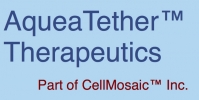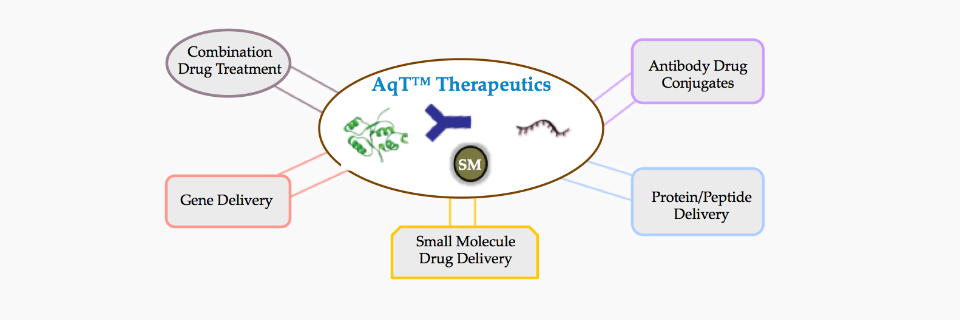Antibody-drug conjugate (ADC) is a new type of drug class approved recently for improving treatment selectivity in patients. An ADC for oncology indications is designed to more selectively kill cancer cells with minimal effects on normal tissue. The concept works very well; however, most of the cytotoxic drugs being linked to antibodies have been very hydrophobic. The hydrophobicity of the drug causes aggregation of the antibody and affects its binding activity. Commercial ADCs and most ADCs currently in development use classic hydrophobic linkers that will add to this problem.
AqT™ linkers are by far the most hydrophilic and versatile linkers currently in development. AqT™ linkers with flexible atom length, end functional groups, and loading capacity can be synthesized and tailored to individual ADC development needs, facilitating a rational optimization approach and greatly increasing the chance of an effective and safe ADC.
Essentially, AqT™ linkers can be used to increase the water solubility of any hydrophobic drug and allow conjugation in 100% aqueous buffer. Upon conjugation, the loaded hydrophobic drug does not have adverse in vivo interactions, or have adverse effect on the antibody-binding activities, or lead to self-aggregation. In-house ADCs made with AqT™-MMAE with only 2 sugar alcohol units attached and an average drug-to-antibody ratio (DAR) of 3.4 demonstrated significant improvements in minimizing aggregation of antibodies and long term stability during the storage.
Due to the increased water solubility, AqT™ linkers also allow higher loading per antibody and less-toxic drugs to be used, offering potentially increased overall efficacy and safety profiles of an ADC. For example, ADCs with average DAR of 8 and 15 has been easily made in house using AqT™-doxorubicin with only 2 sugar alcohol units attached.


